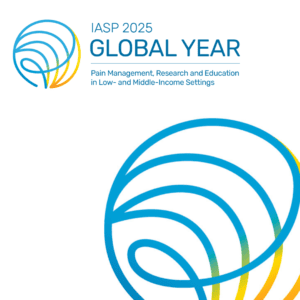- Membership
- Publications
- Resources
- Education
- Event Calendar
- Outreach
- Global Year
- Pain Management, Research and Education in Low- and Middle-Income Settings
- Sex and Gender Disparities in Pain
- Integrative Pain Care
- Translating Pain Knowledge to Practice
- Back Pain
- Prevention of Pain
- Pain in the Most Vulnerable
- Pain Education
- Joint Pain
- Pain After Surgery
- Global Year Campaign Archives
- My Letter to Pain
- IASP Statements
- ICD-11 Pain Classification
- National, Regional, and Global Pain Initiatives
- International Pain Summit
- Pain Awareness Month
- Global Year
- About
- For Pain Patients and Professionals
Skip to content
Papers of the Week
Resting-state functional connectivity predicts motor cortex stimulation-dependent pain relief in fibromyalgia syndrome patients.
Abstract
MRI-based resting-state functional connectivity (rsFC) has been shown to predict response to pharmacological and non-pharmacological treatments for chronic pain, but not yet for motor cortex transcranial magnetic stimulation (M1-rTMS). Twenty-seven fibromyalgia syndrome (FMS) patients participated in this double-blind, crossover, and sham-controlled study. Ten daily treatments of 10 Hz M1-rTMS were given over 2 weeks. Before treatment series, patients underwent resting-state fMRI and clinical pain evaluation. Significant pain reduction occurred following active, but not sham, M1-rTMS. The following rsFC patterns predicted reductions in clinical pain intensity after the active treatment: weaker rsFC of the default-mode network with the middle frontal gyrus (r = 0.76, p < 0.001), the executive control network with the rostro-medial prefrontal cortex (r = 0.80, p < 0.001), the thalamus with the middle frontal gyrus (r = 0.82, p < 0.001), and the pregenual anterior cingulate cortex with the inferior parietal lobule (r = 0.79, p < 0.001); and stronger rsFC of the anterior insula with the angular gyrus (r = - 0.81, p < 0.001). The above regions process the attentional and emotional aspects of pain intensity; serve as components of the resting-state networks; are modulated by rTMS; and are altered in FMS. Therefore, we suggest that in FMS, the weaker pre-existing interplay between pain-related brain regions and networks, the larger the pain relief resulting from M1-rTMS.

